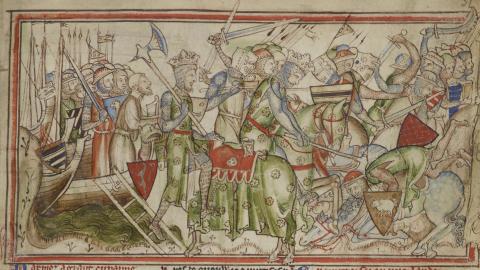Under The Western Front in WW1
A lively portion of WW1 fighting was invisible to the naked eye – a soldier could stand on high ground on the Somme or near Ypres, cast his gaze over the landscape, and see nothing of the carnage to come. He would only feel a tremor at first, which would then swell to a subterranean thunder, shaking his feet from under him. He would see the earth not only move but lift, propelled high into the sky and surrounded by flames. If he'd been underground, he would know that a maze of tunnels existed below the battlefield, and that war above was mirrored by a battle below.
In December 1914, the Germans blew the first mines of the war in Festubert, France. Mining was a fairly ancient war tactic, used hundreds of years before to collapse and then blow up castles and fortified dwellings from below. As trench warfare was stagnant, with troops almost guaranteed to remain in the same place for extended periods of time – giving tunnellers ample time to dig – it made sense to revive the practice. Once the British were made aware that underground warfare was going to be a feature of the war, High Command gave the Royal Engineers the directive to form Tunnelling Companies, and the engineers recruited the best men for the job they could find: civilian miners. The miners occupied an odd position in the army; they were both better paid than the infantry and not so strictly subject to military decorum, hierarchy and rules. They were, after all, recruited to dig, not to fight.
Despite garnering some resentment, the miners' work was respected. They spent days underground digging by hand and foot, as chances were the Germans were digging right alongside them and could hear any kind of machinery, giving the enemy the opportunity to plot their location and set charges. In fact, at least one man had to be on listening duty on all times, not to hear the Germans working but to listen for the absence of sound, as no sounds of work indicated an adjacent tunnel had been abandoned – because it was about to blow. This, in addition to the more prosaic dangers of collapse, flooding and gas, made the underground battlefield a terrifying place to be. Soldiers admitted they'd rather be in the trenches, if tunnels and trenches were the only choices.
The British Tunnelling Companies pulled off their first successful blast under Hill 60 in the Ypres salient in April 1915, and from then mining became an integral part of the offensive on both sides. On the first day of the Somme offensive – 1 July 1916 – the British exploded nineteen mines, which could be heard in London and one of which produced a crater 82 metres across and 21 metres deep. These explosions were expected to stun and destroy, not just killing enemy combatants but collapsing dugouts, ruining artillery and severing men from their command. Sometimes it was effective and sometimes it wasn't, particularly if follow-up was neither quick nor decisive.
Miners changed both the physical and conceptual landscape of the war, giving the world the largest explosions it had ever seen to that point, and tunnel warfare continued to be a key military tactic through the twentieth century.















